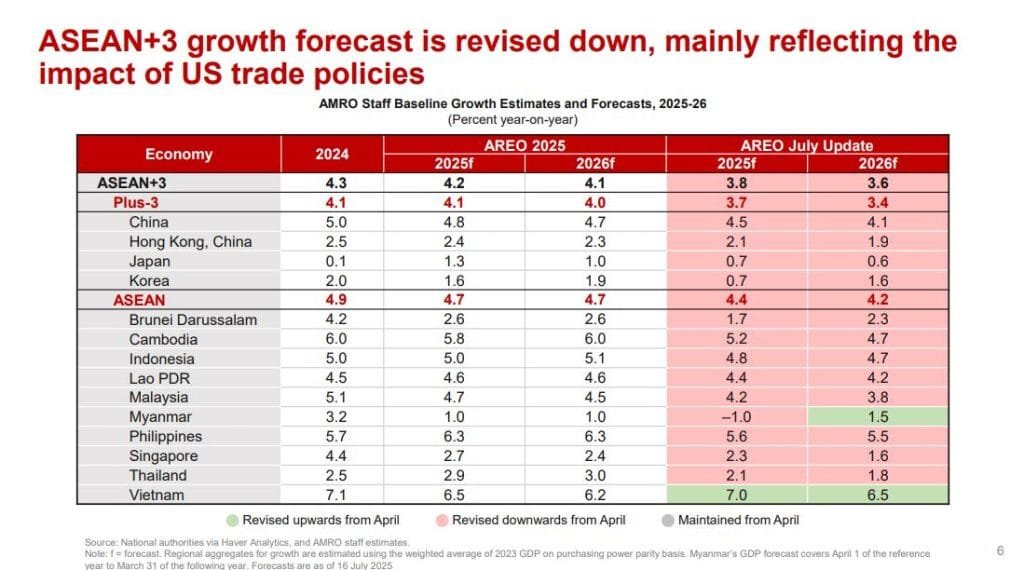As of August 1, 2025, Cambodia faces a 36% blanket tariff on all exports to the United States. This move places Cambodia among the region’s hardest-hit nations, matching Thailand’s tariff level but far worse than Vietnam’s 20% and Malaysia’s 25%. Adding to the pressure, transshipped goods now face a 40% rate, intensifying the Cambodia export tariff risk and pushing supply chains to the edge.

In 2024, Cambodia exported $9.91 billion worth of goods to the US, accounting for 37% of total exports and nearly 25% of the country’s GDP. With these new tariffs, the economic fallout could be profound.
Sector Breakdown: Who’s Most Affected?
Cambodia’s economy is heavily dependent on three key sectors: garments, footwear, and agriculture. Garments alone account for 60% of total exports, and the US is a top buyer of these products. Footwear and agriculture face similar headwinds, with thinner profit margins leaving little room to absorb additional costs.
The tariff differential with Vietnam, which now enjoys a 16-point advantage, may prompt global brands to relocate production, particularly to Vietnam and Bangladesh, where labor costs are lower and trade terms more favorable.
Cambodia Export Tariff Risk: Jobs and Investments
The garment and footwear industries employ around 800,000 Cambodians, most of whom are women. Analysts warn that tens of thousands of jobs are at risk, as factories begin to scale down or shut operations. The rising Cambodia export tariff risk is already leading to a decline in foreign direct investment (FDI) in the export sector, with investors citing long-term uncertainty and growing costs.
Adding to the concern, the EU is expected to raise tariffs from 20% to 30% in 2026. If that happens, up to 80% of Cambodia’s economy could face serious disruption, according to tax experts. That level of exposure raises the alarm for policymakers and businesses alike.
Government Response: Diversification and Diplomacy
Cambodian officials are working to negotiate a reduction to 25%, but as of now, the 36% rate remains in effect. In response, the government is pushing for regional trade diversification, investing in infrastructure like the China-funded Funan Techo Canal, and exploring deeper ties with ASEAN and Latin America.
Yet, these measures take time. In the short term, businesses must navigate a sharp and potentially long-lasting trade shock.
Read Also: How Cambodia Export Tariff Avoidance Saves $7B Trade
Compliance and Supply Chain Shifts
The 40% tariff on transshipped goods puts added pressure on compliance and regional logistics. Brands are already shifting sourcing to countries with lower tariff exposure. Vietnam, Bangladesh, and even parts of Africa are emerging as alternative supply chain hubs.
Investors are closely monitoring the EU’s upcoming tariff decision, recognizing it as a second major front in the evolving Cambodia export tariff risk scenario.
Cambodia Export Tariff Risk: A Test of Resilience
Cambodia’s export-dependent economy now faces its most serious threat in decades. A combination of steep tariffs, job losses, and investor pullback may force structural changes across industries. With 37% of exports and a quarter of GDP tied to the US, the stakes are enormous.
Navigating this turbulent period of Cambodia Export Tariff Risk will require more than quick fixes. Long-term resilience will depend on regional trade integration, smart diplomacy, and urgent economic diversification to reduce the nation’s vulnerability to future trade shocks.
Read Also: Cambodia Logistics Infrastructure Development Gears Up
